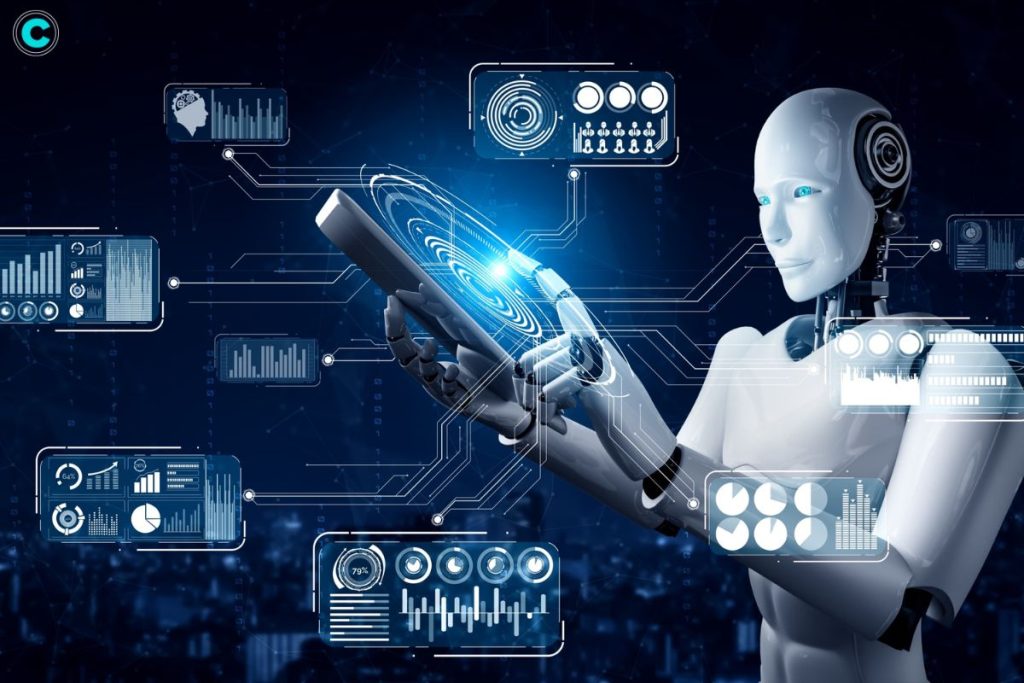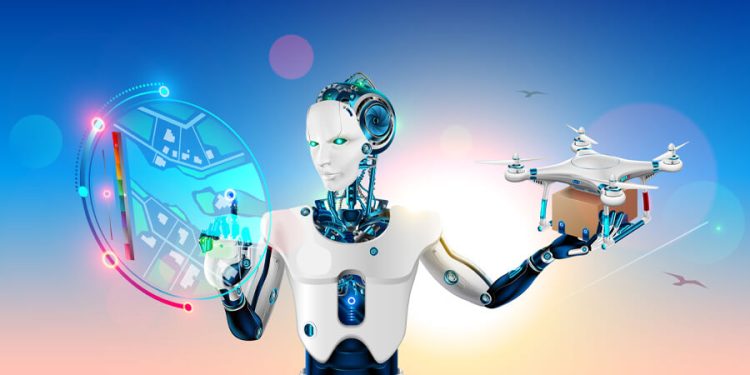1. Introduction
- Contextual Overview:
- Introduce the rapid advancements in robotics and artificial intelligence (AI), highlighting their increasing presence in various industries such as healthcare, manufacturing, autonomous vehicles, and military applications. As robots become more integrated into human society, the necessity of ethical guidelines becomes more pronounced.
- The Ethical Dilemma:
- Explain why ethical considerations are essential for robots, especially when performing tasks that directly affect human lives, such as surgery, caregiving, or law enforcement. Discuss the risks associated with robots not adhering to ethical standards, including harm, inequality, and trust issues.
- Purpose of the Article:
- State the purpose of the article: to explore the mechanisms, frameworks, and strategies that can ensure robots follow ethical guidelines when performing tasks. The article will delve into different approaches, from embedding ethics into robot design to implementing real-time monitoring.
2. The Foundations of Ethical Robotics
- What is Ethical Robotics?:
- Define ethical robotics and its significance in ensuring robots behave in morally acceptable ways. Discuss the moral theories that underpin robot ethics, including utilitarianism, deontology, and virtue ethics.
- Core Ethical Principles for Robots:
- Beneficence: Robots must act in ways that benefit humans and society.
- Non-Maleficence: Robots should avoid causing harm to humans, ensuring their actions do not lead to negative consequences.
- Autonomy: Robots should respect human autonomy, allowing individuals to make their own choices without undue interference.
- Justice: Robots should operate fairly, ensuring they do not perpetuate biases or inequality.
- Ethical Challenges in Robotics:
- Explore the challenges robots face in adhering to ethical standards, especially when faced with complex and morally ambiguous situations. Discuss the ethical concerns surrounding robot decision-making, such as in autonomous vehicles (e.g., the trolley problem), caregiving robots, or military robots.
3. Embedding Ethical Guidelines in Robot Design
- Incorporating Ethical Algorithms:
- Discuss how algorithms can be designed to ensure robots act ethically in various situations. Explore decision-making frameworks like reinforcement learning and rule-based systems, focusing on how these can incorporate ethical principles into robot behavior.
- Ethics-by-Design Approach:
- Introduce the concept of “ethics-by-design,” which involves integrating ethical considerations directly into the design process of robots. This includes creating robots with built-in ethical decision-making systems, safety protocols, and conflict resolution mechanisms.
- Programming Ethical Boundaries:
- Detail how robot programmers and engineers can create ethical boundaries, such as programming robots to prioritize human safety, make morally sound decisions, and avoid harmful actions. This may involve defining clear operational limits, such as prohibiting robots from engaging in harmful behavior under any circumstance.
- Transparency in Robot Decision-Making:
- Discuss the importance of transparency in robot decision-making processes. This includes ensuring that robot behaviors and decision-making criteria are understandable to human users and stakeholders, making it possible for people to trust robots and their ethical decision-making.

4. The Role of Machine Learning in Ethical Behavior
- Machine Learning and Ethical Decision Making:
- Explain the role of machine learning (ML) in enabling robots to make ethical decisions. Discuss how robots can be trained on vast datasets to recognize ethically relevant scenarios, from medical treatment decisions to security-related actions.
- Supervised Learning for Ethical Behavior:
- Explore how supervised learning can help robots understand ethical behavior by training them on datasets with clearly labeled ethical choices. For instance, robots could be trained to recognize what constitutes harm or benefit in different contexts, learning to act in ways that align with ethical norms.
- Unsupervised Learning and Ethical Problem-Solving:
- Describe how unsupervised learning techniques allow robots to analyze patterns in data without explicit labeling, enabling them to identify ethical behavior based on context. This approach might be useful in situations where predefined ethical rules cannot cover all possible scenarios.
- Reinforcement Learning and Ethical Policy:
- Dive into reinforcement learning as a method for robots to learn from interactions in real-time. Discuss how robots can be programmed to maximize “ethical rewards” (such as human well-being, fairness, and safety) by receiving positive feedback when making ethical decisions and negative feedback for unethical actions.
- Ensuring Fairness and Reducing Bias:
- Discuss how deep learning algorithms used by robots can inadvertently introduce biases based on the data they are trained on. Explore methods like bias detection, fairness-aware algorithms, and adversarial training to ensure robots are ethically fair and unbiased.
5. Monitoring and Oversight of Robot Ethics in Action
- Real-Time Ethical Monitoring Systems:
- Explore the necessity of monitoring systems that track robot behavior in real time. Explain how these systems can ensure robots adhere to ethical norms and intervene when robots begin to act in an unethical manner. Examples include monitoring software for autonomous vehicles, healthcare robots, and robots in military settings.
- Human-in-the-Loop Systems:
- Introduce the concept of human-in-the-loop systems, where humans have the authority to intervene and oversee robot actions. Discuss the importance of human oversight in ensuring robots operate within ethical boundaries and provide examples of how this is implemented in practice.
- Ethical Auditing of Robots:
- Discuss the role of ethical audits in robot deployment. These audits involve periodic assessments of robot behavior, decision-making algorithms, and overall system performance to ensure ethical compliance. Explore the concept of ethical certifications and standards for robots.
- Ensuring Accountability:
- Examine the mechanisms through which accountability can be enforced when robots fail to follow ethical guidelines. Should manufacturers, operators, or robots themselves be held responsible for unethical behavior? Discuss the need for clear accountability structures in robot ethics.
6. Ethical Challenges in Specific Robotic Applications
- Healthcare Robotics:
- Explore the ethical challenges posed by robots in healthcare, such as surgical robots or robotic caregivers. Discuss patient privacy, informed consent, and the ethical boundaries of using robots in life-and-death situations.
- Autonomous Vehicles:
- Discuss the ethical dilemmas faced by self-driving cars, especially in accident scenarios (e.g., the trolley problem). How can these vehicles be programmed to make decisions that prioritize human life and minimize harm while complying with ethical standards?
- Military and Defense Robots:
- Examine the ethical implications of using robots in military contexts. Discuss the morality of autonomous weapons and the risks of robot-controlled warfare, highlighting issues such as accountability, human oversight, and the potential for misuse.
- Service Robots:
- Explore ethical considerations in robots deployed in service industries, such as hospitality, retail, and customer service. How can robots be designed to interact ethically with humans, ensuring fairness, transparency, and respect for privacy?
7. Future Directions in Ethical Robotics
- Advances in Ethical AI:
- Discuss the future of AI in ethical decision-making for robots. Explore emerging techniques in AI, such as explainable AI (XAI), which aim to make robot decision-making more transparent and understandable for human users.
- Collaboration Between Ethicists, Engineers, and Policymakers:
- Emphasize the importance of cross-disciplinary collaboration to tackle the ethical challenges of robotics. How can ethicists, engineers, and policymakers work together to create a comprehensive framework for ethical robot development and deployment?
- Ethical Governance and Legislation:
- Explore the potential for creating global ethical guidelines and legal frameworks to govern robot behavior. Should there be a universal code of ethics for robots, or should these frameworks vary by region and application? Discuss the role of international organizations in developing ethical standards for robotics.
- The Role of Public Engagement in Robot Ethics:
- Highlight the importance of public engagement and dialogue on the ethical implications of robotics. As robots become more integrated into society, it is essential to involve the public in discussions about the ethical use of robots and ensure societal values are considered in robot design.
8. Conclusion
- Summary of Key Insights:
- Recap the main points discussed throughout the article, emphasizing the need for robust ethical frameworks, real-time monitoring, and interdisciplinary collaboration to ensure robots follow ethical guidelines while performing tasks.
- Call to Action:
- Conclude by stressing the importance of continued research and development in ethical robotics. As robots increasingly become a part of daily life, their ethical behavior will have significant consequences for individuals and society. Responsible design, regulation, and oversight are essential to ensure that robots contribute positively to human welfare.







































